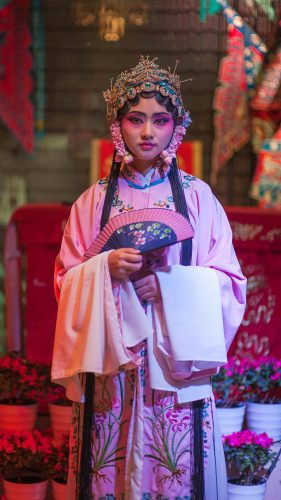Japan and China, two of the most influential and powerful nations in the world, are renowned for their rich cultural heritage, unique traditions, and distinct ways of life. While geographically close and both located in East Asia, these two countries have a wide range of cultural differences that are essential to recognize and understand.
In this exploration, we will dive into the various aspects that set Japan and China apart—from their deep-rooted histories and traditional values to their modern customs and social norms. By understanding these differences, we gain a greater appreciation for the richness and diversity that define these two remarkable nations.
To truly grasp the cultural contrasts between Japan and China, it is crucial to consider the historical foundations that have shaped each country.
China, home to one of the world’s oldest civilizations, has a history spanning thousands of years, influencing its values, belief systems, and societal norms. From the awe-inspiring Great Wall to the philosophical teachings of Confucius, China’s historical legacy is a vast and intricate tapestry of profound significance.
Japan, on the other hand, is an island nation with a history equally ancient yet uniquely its own. A fusion of indigenous traditions and influences from neighboring regions has shaped its cultural identity. The warrior ethos of the samurai, the graceful art of the tea ceremony, and the meditative beauty of Zen Buddhism are just a few cultural elements that define Japan’s historical and ethical landscape.
Despite their distinct historical paths, Japan and China have shared extensive cultural exchanges over the centuries, leading to overlapping traditions, philosophies, and artistic influences. The impact of Chinese culture on Japanese language, philosophy, and art is a testament to the deep and interconnected history of these two great civilizations.
Religious and Philosophical Traditions
Religion and philosophy play a vital role in shaping the cultural fabric of both Japan and China, with each country embracing a unique blend of spiritual beliefs and philosophical principles.
In China, Confucianism, Taoism, and Buddhism have been the pillars of its religious and ethical landscape. The reverence for ancestors, the pursuit of harmony with nature, and Confucius’ teachings on morality and filial piety have profoundly shaped Chinese society, influencing everything from family dynamics to governance and social order.
Similarly, Japan’s spiritual and philosophical traditions are deeply rooted in Shinto and Zen Buddhism, both of which have shaped the country’s worldview and cultural expressions. The reverence for kami (spirits), the aesthetic appeal of traditional Japanese gardens, and the mindfulness embodied in the art of the tea ceremony are all reflections of Japan’s rich spiritual heritage.
While Buddhism has influenced both countries, each nation has adapted it in its own way, leading to distinct religious practices and interpretations that reflect their unique cultural and historical dynamics.
Language and Writing Systems
Language is one of the most fundamental expressions of culture, and Japan and China have distinct linguistic systems that reflect their histories and identities.
China’s writing system, with its vast repertoire of intricate characters, is one of the most ancient and complex in the world. This contrasts significantly with Japan’s system, which incorporates both kanji (characters borrowed from Chinese) and hiragana and katakana (syllabic scripts developed in Japan). The influence of Chinese script on Japan’s writing system is a clear example of the lasting historical and cultural exchange between the two nations.
Spoken Japanese and Chinese are also fundamentally different. While Mandarin Chinese is a tonal language where a single syllable can have multiple meanings depending on intonation, Japanese follows a more melodic and structured rhythm with an elaborate system of honorific speech, reflecting the deep-rooted cultural emphasis on politeness and social hierarchy.
Understanding these linguistic nuances not only sheds light on the complexities of communication in both cultures but also provides insight into the underlying values and traditions that shape daily life in China and Japan.
Visual and Performing Arts

The artistic traditions of Japan and China are deeply reflective of their respective cultural heritages, showcasing centuries of creativity and innovation.
Chinese arts, from the elegant strokes of calligraphy to the dramatic performances of Beijing opera, highlight a long-standing appreciation for artistic refinement. Traditional Chinese porcelain and ceramics, with their exquisite craftsmanship, are another example of the country’s deep artistic legacy.
Japanese arts, in contrast, are known for their minimalist elegance and deep symbolism. The ikebana (art of flower arrangement), kabuki theater, and ukiyo-e woodblock prints embody the unique aesthetics of Japan. The graceful simplicity of Japanese ink paintings and the refined beauty of the kimono, with its intricate patterns and rich colors, further illustrate the nation’s artistic ingenuity.
While there are overlapping artistic influences, the visual and performing arts of both countries resonate with distinct cultural narratives, reflecting the unique traditions and aesthetics that have evolved in each nation.
Social Customs and Cultural Norms
Social etiquette and cultural traditions are deeply ingrained in both Japanese and Chinese societies, reflecting their values, philosophies, and interpersonal dynamics.
In China, social interactions often emphasize filial piety, the importance of guanxi (personal connections), and traditional celebrations like Chinese New Year and the Mid-Autumn Festival, which underscore the significance of family unity and ancestral respect.
Japan, on the other hand, places a strong emphasis on respect, humility, and formal etiquette. Social interactions are guided by customs such as exchanging meishi (business cards) with great care, oseibo (gift-giving to express gratitude), and observing seasonal traditions like Obon and Shogatsu (New Year celebrations). The intricate rituals of the Japanese tea ceremony further illustrate the nation’s reverence for tradition, mindfulness, and refined aesthetics.
Understanding these social customs provides deeper insight into the daily lives of people in Japan and China and highlights the values that form the foundation of their respective societies.
Conclusion
Exploring the cultural landscapes of Japan and China reveals a rich tapestry of traditions, values, and customs that have flourished over thousands of years. From language and artistic expressions to deeply rooted spiritual beliefs and social etiquette, both countries have built civilizations that stand as testaments to human creativity, resilience, and innovation.
By recognizing and respecting the unique differences and shared influences that define Japan and China, we cultivate a greater appreciation for their histories and contributions to global culture. These two nations, while distinct in their traditions, continue to inspire and shape the world, bridging the past with the present and offering invaluable insights into the complexity and beauty of human civilization.




